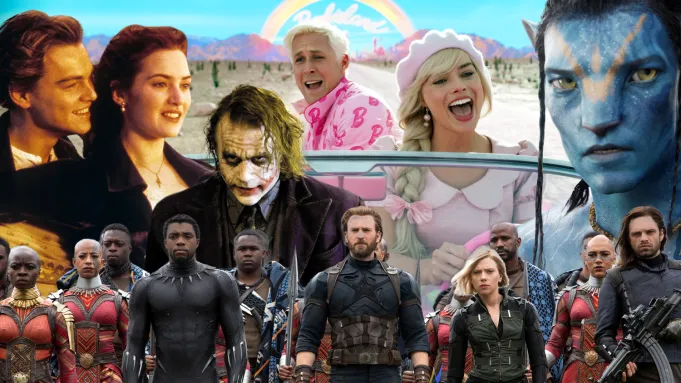Exploring the Magic of Movies: A Journey Through Cinematic Art
Movies have been a source of entertainment, inspiration, and emotion for over a century. Whether you’re sitting in a dark theater or streaming from the comfort of your home, films have the unique power to transport us to different worlds, introduce us to diverse characters, and evoke a wide range of emotions. In this article, we dive into the magic of movies, their impact on society, and some iconic genres and trends in the film industry.
1. The History of Cinema
The history of cinema dates back to the late 19th century, with the invention of the first motion picture cameras and projectors. The Lumière brothers, Thomas Edison, and Georges Méliès were pioneers in the early days of film, helping to lay the foundation for the film industry as we know it today.
The early films were short and silent, with live music or narration accompanying the screenings. It wasn’t until the late 1920s that sound was introduced with the release of The Jazz Singer, revolutionizing the industry. Over the decades, color films, CGI, and 3D technology would further push the boundaries of filmmaking, creating more immersive experiences for viewers.
2. The Magic of Storytelling
One of the key elements of any great movie is its story. Whether it’s a high-stakes action film, a heartfelt romance, or a thrilling mystery, a well-told story can captivate audiences and create a lasting impact.
Movies offer a medium for writers and directors to express their creativity, dive into human emotions, and tackle important issues. Genres like drama, horror, science fiction, and fantasy allow filmmakers to explore the limitless potential of imagination. Well-crafted plots, compelling characters, and thought-provoking themes ensure that films resonate with audiences, long after the credits roll.
3. Popular Movie Genres
Movies come in all shapes, sizes, and styles, making it easy for everyone to find something that resonates with them. Here are a few of the most popular movie genres:
- Action: High-energy, fast-paced movies filled with thrilling sequences and intense conflicts. Examples include The Dark Knight, Mad Max: Fury Road, and Die Hard.
- Romance: Films centered around love, relationships, and the emotional ups and downs of being in love. Classic examples include The Notebook, Titanic, and Pride and Prejudice.
- Comedy: Light-hearted films designed to entertain and make us laugh. Popular examples include Superbad, The Hangover, and Dumb and Dumber.
- Drama: These films explore serious, thought-provoking topics and character development. Examples include Forrest Gump, The Pursuit of Happyness, and A Beautiful Mind.
- Horror: Movies designed to evoke fear and suspense. Iconic films include The Exorcist, Psycho, and Get Out.
- Sci-Fi/Fantasy: These films explore futuristic concepts, alternate realities, and imaginative worlds. Popular titles include Star Wars, Inception, and The Matrix.
- Documentaries: Non-fiction films that provide in-depth explorations of real-life events, people, or phenomena. Notable examples include Won’t You Be My Neighbor?, 13th, and The Last Dance.
- Musicals: Films where singing and dancing play a central role in the storytelling. Famous musicals include The Sound of Music, La La Land, and Hamilton.
4. The Art of Filmmaking
Behind every great movie is a team of talented individuals who work together to bring a vision to life. Filmmaking is a collaborative art that involves many aspects:
- Directing: The director is responsible for overseeing the creative aspects of the film, including the story, performances, and visual style.
- Screenwriting: The script is the blueprint for the film, and screenwriters develop the dialogue, structure, and narrative.
- Cinematography: The cinematographer, or director of photography, is responsible for capturing the visual elements of the film, including lighting, camera angles, and shot composition.
- Editing: After the film is shot, editors piece together the footage to create the final product. This involves choosing the best takes, pacing the story, and adding special effects or sound.
- Sound and Music: The music score, sound effects, and dialogue all work together to create the emotional tone of the film.
- Production Design: The production designer creates the world of the film, designing sets, costumes, and props that help bring the story to life.
5. The Impact of Movies on Society
Movies have a profound influence on society and culture. From shaping public opinion to reflecting the times, films have often been a mirror of the world we live in. They have the ability to tackle social issues, challenge the status quo, and inspire change.
For instance, films like Schindler’s List have helped educate audiences about the horrors of the Holocaust, while movies like Selma and 12 Years a Slave have highlighted the struggles of African Americans throughout history. Meanwhile, comedies like The Hangover and Superbad capture the spirit of a generation.
Movies also influence fashion, music, and even language. Iconic characters and memorable lines often become part of popular culture, shaping trends and conversations.
6. The Future of Movies
As technology continues to evolve, the future of filmmaking looks incredibly exciting. Advancements in special effects, virtual reality (VR), and artificial intelligence (AI) are pushing the boundaries of what is possible in storytelling. Streaming platforms have already changed the way we consume films, and the rise of 4K and 8K resolution displays is making movies more immersive than ever.
We may also see a rise in interactive movies, where viewers can choose the direction of the plot, similar to interactive TV shows like Black Mirror: Bandersnatch. The future promises to bring even more dynamic and engaging ways for audiences to experience the magic of cinema.
Conclusion
Movies are more than just a form of entertainment; they are a reflection of who we are, where we’ve been, and where we’re headed. The film industry is ever-evolving, but its core purpose remains the same: to tell stories that connect with audiences on an emotional level. From blockbuster hits to indie gems, movies provide us with an escape, a mirror, and a window into different cultures, perspectives, and ideas.

